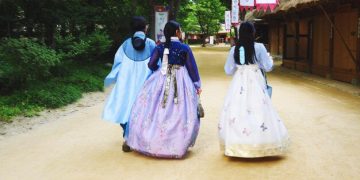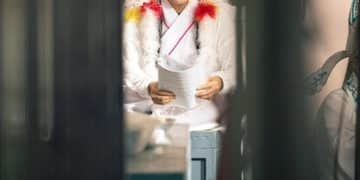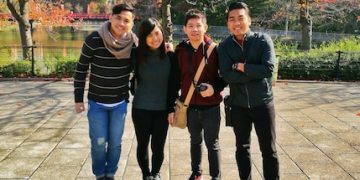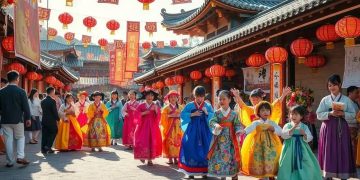Understanding Seollal: Korean New Year Celebrations in the US
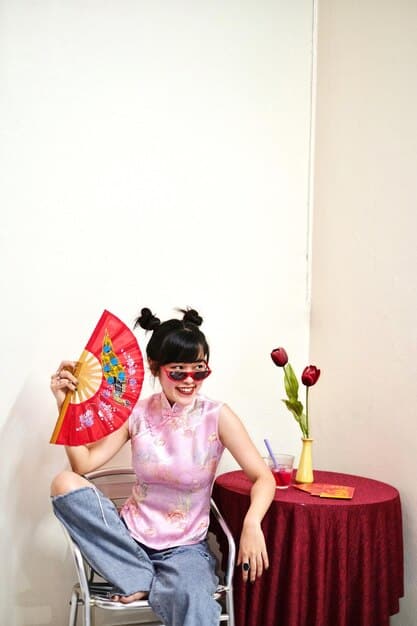
Seollal, the Korean Lunar New Year, holds significant cultural importance in the US, celebrated by Korean-American communities through traditional rituals, family gatherings, ancestral veneration, and the sharing of Korean cuisine, fostering a sense of identity and connection to heritage.
Understanding the Significance of Seollal (Korean New Year) Celebrations in the US offers a unique glimpse into the traditions and customs that thrive within the Korean-American community.
What is Seollal? A Cultural Overview
Seollal, also known as Korean Lunar New Year, is one of the most significant traditional holidays in Korea. It’s a time for families to come together, honor ancestors, and celebrate the beginning of a new year according to the lunar calendar. But what does this celebration look like when it’s transplanted to the United States?
The observance of Seollal in the US is a fascinating blend of Korean tradition and American adaptation. Korean-American families strive to maintain the customs while navigating the realities of living in a different cultural context.
Core Traditions of Seollal
Several key traditions define the essence of Seollal. These are often cherished and carefully preserved, even thousands of miles away from the Korean peninsula.
- Charye (차례): An ancestral memorial rite, involving the preparation of food offerings to honor deceased ancestors. It’s a way to show respect and seek blessings for the new year.
- Sebae (세배): The formal New Year’s bow, where younger generations bow deeply to their elders, wishing them good health and fortune. In return, elders offer words of wisdom and *sebaetdon* (세뱃돈), New Year’s money.
- Tteokguk (떡국): A traditional rice cake soup, considered an essential dish for Seollal. Eating tteokguk symbolizes gaining another year of age.
These traditions anchor Seollal celebrations, providing a tangible connection to Korean heritage for those living in the US.
In summary, Seollal is more than just a holiday; it’s a cultural bridge connecting generations of Korean-Americans to their ancestral roots. The traditions associated with Seollal highlight the importance of family, respect, and remembrance.
How Korean-Americans Celebrate Seollal
Seollal celebrations in the United States often reflect a blend of tradition and adaptation. Korean-American families strive to observe the core customs while making adjustments to fit their lives in America.
Maintaining cultural identity is a key motivation for celebrating Seollal in the US. It provides a valuable opportunity for younger generations to learn about their heritage and connect with their Korean roots.
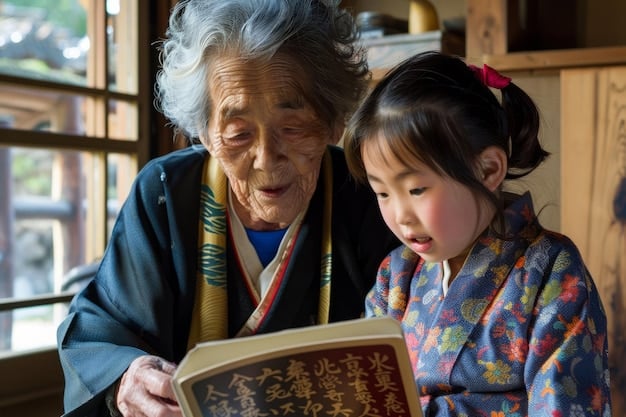
Adaptations and Innovations
While the essence of Seollal remains the same, some adaptations are inevitable. These modifications often reflect the realities of living in a different cultural context.
- Scheduling: Many Korean-Americans adjust the timing of their Seollal celebrations to accommodate work and school schedules. Weekend gatherings are common.
- Combining Traditions: Some families blend Korean and American traditions, perhaps incorporating elements of both cultures into their celebrations.
- Community Events: Korean-American community organizations often host Seollal events, providing opportunities for families to connect with others and celebrate together.
These adaptations demonstrate the resilience and adaptability of cultural traditions, ensuring that Seollal continues to thrive in the US.
Ultimately, Seollal celebrations in the US are a personalized experience, reflecting the unique circumstances and values of each Korean-American family. The commitment to preserving cultural heritage remains a central theme.
The Significance of Family Gatherings
At the heart of Seollal celebrations, both in Korea and in the US, lies the importance of family gatherings. This emphasis on familial bonds is a cornerstone of Korean culture.
For Korean-Americans, Seollal provides a valuable opportunity to reconnect with relatives, reinforce family values, and strengthen intergenerational relationships.
Strengthening Family Ties
The act of coming together for Seollal reinforces the importance of family unity and support. It’s a time to share stories, create memories, and reaffirm familial bonds.
Families who may be geographically dispersed throughout the year make a special effort to gather for Seollal, highlighting the enduring significance of this holiday.
Honoring Elders
The tradition of *sebae* underscores the importance of respecting and honoring elders. Younger generations express their gratitude and seek blessings for the new year.
- Bowing to elders is a tangible expression of respect and deference.
- Elders often offer words of wisdom and guidance to younger family members.
- The exchange of *sebaetdon* symbolizes good fortune and prosperity for the year ahead.
This intergenerational exchange is a vital part of Seollal, strengthening the connection between generations.
In short, the core theme of Seollal is family unity. The act of coming together to share rituals strengthens family members connections to each other.
Seollal Foods: A Culinary Journey
Food plays a central role in Seollal celebrations, both as offerings to ancestors and as a means of sharing a culinary heritage with family and friends. Every dish carries with it a unique symbolic meaning or function.
Korean-American families often go to great lengths to prepare traditional Seollal dishes, recreating the tastes and aromas of their ancestral homeland in the US.
Essential Seollal Dishes
Several dishes are considered essential for a traditional Seollal feast. These culinary staples are often passed down through generations, preserving family recipes and traditions.
- Tteokguk (떡국): The undisputed star of Seollal, this rice cake soup symbolizes good luck and longevity. The oval-shaped rice cakes represent coins and the hope for prosperity.
- Japchae (잡채): A colorful glass noodle dish stir-fried with vegetables and meat. Japchae symbolizes harmony and balance.
- Mandu (만두): Korean dumplings, often filled with meat, vegetables, and kimchi. Making mandu together is a family activity in itself.
These dishes not only nourish the body but also nourish the soul, connecting Korean-Americans to their cultural heritage.
The sharing and cooking of foods are important aspects of celebrating Seollal culture.
The Seollal meal represents not only a taste of Korea but also a celebration of family, heritage, and hope for the future.
Seizing the Moment: Traditional Games and Activities
Beyond food and family gatherings, Seollal is a time for traditional games and activities that promote fun, laughter, and cultural connection.
These games and activities provide opportunities for Korean-Americans to engage with their heritage in a playful and interactive way.
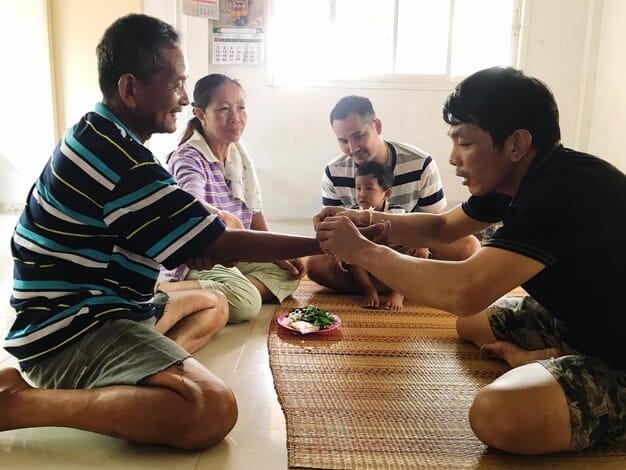
Engaging in Traditional Pastimes
Several games and activities are commonly enjoyed during Seollal. These pastimes provide entertainment while also reinforcing cultural knowledge and values.
Yut Nori (윳놀이) is a popular board game played with four wooden sticks. It’s a game of strategy and chance, enjoyed by people of all ages.
Activities List
- Jegichagi (제기차기): A Korean version of hacky sack, where players kick a small object wrapped in cloth.
- kite flying (연날리기): Building and flying kites is a traditional Seollal activity, symbolizing the release of bad luck and the welcoming of good fortune.
These games and activities are fun, engaging ways for Korean-Americans to celebrate their heritage and create lasting memories.
When Korean-Americans play traditional games, they can honor their heritage while at the same time forming lasting relationships within their communities.
The Evolving Identity of Korean-Americans
The celebration of Seollal in the US reflects the evolving identity of Korean-Americans, a group striving to maintain their cultural heritage while navigating life in a new country.
Seollal provides a valuable opportunity for Korean-Americans to connect with their roots, reinforce their cultural identity, and share their heritage with others.
Preserving Cultural Heritage
Maintaining cultural traditions like Seollal is essential for preserving a sense of identity and belonging.
- Seollal celebrations provide a tangible connection to Korean history, language, and customs.
- Passing down traditions to younger generations ensures the continuity of Korean culture in the US.
Seollal helps Korean-Americans embrace their cultural identity, allowing them to stand tall amongst their neighbors in the US.
Building Bridges across Cultures
Sharing Seollal with non-Korean friends and neighbors fosters cultural understanding and appreciation. It is a great moment to learn about others customs and values.
Korean-Americans play an important role in promoting cultural diversity, enriching the social fabric of the United States.
Ultimately, the celebration of Seollal in the US reflects the dynamic and evolving identity of Korean-Americans, a group committed to honoring their past while embracing their future.
| Key Element | Brief Description |
|---|---|
| 👪 Family Gathering | Reuniting with relatives to celebrate and strengthen bonds. |
| 🍲 Traditional Food | Enjoying dishes like Tteokguk, Japchae, and Mandu, each with cultural significance. |
| 🙇 Ancestral Rites | Honoring ancestors through Charye and Sebae. |
| 🎉 Traditional Games | Playing games like Yut Nori and Jegichagi for fun and cultural engagement. |
Frequently Asked Questions
▼
Seollal marks the beginning of the Korean Lunar New Year, emphasizing family reunions, honoring ancestors, and celebrating Korean culture. It symbolizes renewal and new beginnings.
▼
Korean-Americans celebrate Seollal in the US by holding family gatherings, performing ancestral rites, enjoying traditional foods like tteokguk, and playing traditional Korean games.
▼
Tteokguk is a traditional Korean rice cake soup. It’s eaten during Seollal to symbolize gaining another year of age and is believed to bring good luck for the new year.
▼
Besides eating, traditional Seollal activities include performing sebae (New Year’s bow to elders), playing folk games like Yut Nori, and visiting family to wish them good fortune.
▼
Seollal helps Korean-Americans to celebrate and promote their culture in their communities. It serves as one crucial marker in helping them understand their heritage through food, customs, and rituals.
Conclusion
Celebrating Seollal (Korean New Year) in the US is all about family unity and traditions. It serves as a reminder of Korean culture and heritage, and how these customs live on in the United States.

